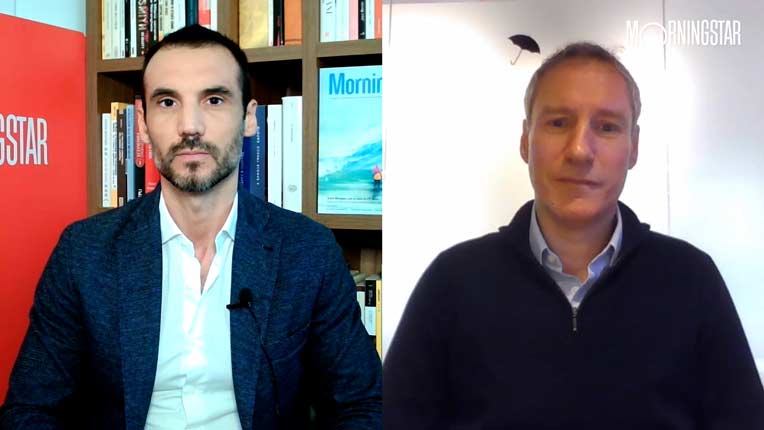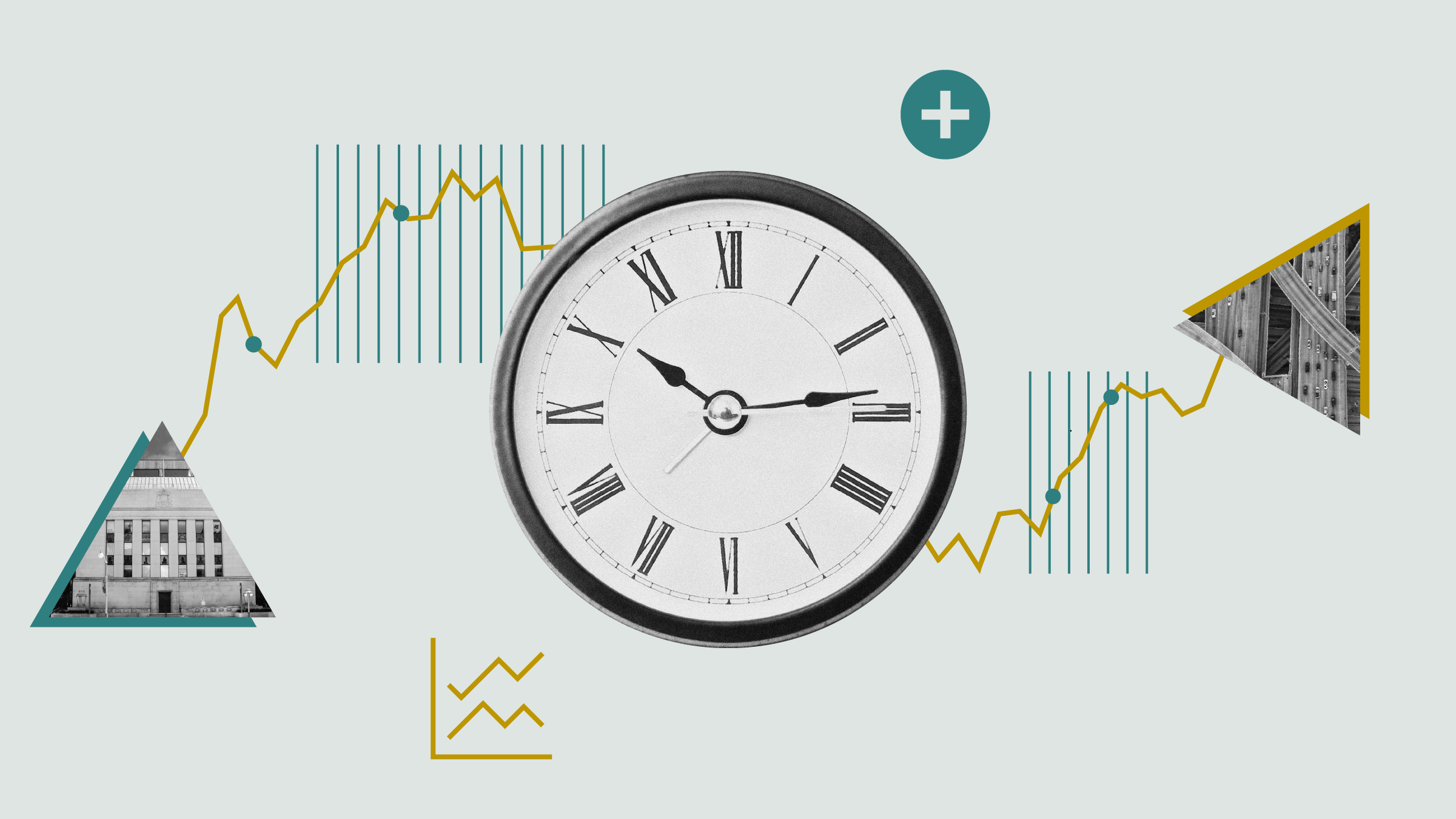Jason Stipp: I'm Jason Stipp for Morningstar.
The market shrugged off a soft third read of first-quarter GDP; that came in at 1.8% instead of an expected 2.4%.
What does this mean to Bob Johnson, our director of economic analysis, and for his forecast for the full-year GDP? He is here to talk about the numbers and his expectations.
Thanks for joining me, Bob.
Bob Johnson: Great to be here.
Stipp: We did get a third [read] of the first-quarter GDP. It was a lot softer than economists had expected at 1.8% versus 2.4%. That seems soft to me. What's your read on that?
Johnson: It is kind of unusual for the third read of a GDP to be this much off the original. Usually the second revision is the biggest one. So, I was a little bit surprised at the magnitude of the number. So it did surprise me, absolutely, but it gives us a smaller base to work from in the quarters ahead. But nevertheless, the number was disappointing, and it seems to indicate that the first quarter was a little softer, and the payroll tax had a bigger impact than people thought.
In a lot of the more discretionary items, things that people might immediately grab at in a hurry to cut expenses--namely, restaurant spending is certainly one of those categories, and travel spending is another, where [consumers] cut back a little bit. The other one that's interesting is health care, which got cut back a little bit. We're still seeing the cost curve and the usage are still getting bent downwards, and that's been a big part of the deficit decrease estimates.
Stipp: So you're talking about some of the culprits there, but these roll up, obviously, into the consumer was softer in the first quarter because of lower spending.
Johnson: Absolutely. … The original read on it was something like 3.4% growth, which seemed really pretty stunning, and now they've reduced it into the high 2% range. So, that's clearly a lower number than we had all thought before, and they brought down some of the other categories as well.
Stipp: The other big part of GDP, obviously not as big as consumer, but business investment spending was worse than they originally thought it was.
Johnson: Yes. They thought that might be down 2%-3%; now it is something much closer to 8% down. So, clearly, the businesses were reacting to the slower consumer and, how are they going to react to the payroll tax situation and the sequester, and [businesses] weren't going out on a long limb, and we suspected this would be a weak category.
Stipp: So business, obviously, has been reluctant to go all-in, while there is still a little bit of uncertainty about softness in the economy.
Let's talk about the consumer a little bit, though, looking forward. You say there are some yellow lights for the consumer in some areas, but also some green lights for the consumer in some areas. Can you explain that?
Johnson: Sure. I don't like to look at the consumer confidence surveys. Despite the Fed talking about them as a favourite indicator, I think they are a terrible indicator. They happen to seem to go along with stock market prices, gasoline prices, and house prices, and you roll those with the right weights, and that's kind of what the number is. I don't find it terribly predictive.
But I do like the methodology where I look at shopping center sales weekly for the short-term outlook for the consumer, auto sales for the mid-term, and housing for the long-term. And those are the three metrics that I really like to gauge where the consumer is at. Part of the reason that I'm optimistic, and I will work backward, I usually talk about the short-term first, but the long-term: housing prices.
Stipp: So we got data on Case-Shiller, which is somewhat lagging or looking backward at this point, but it showed strong increases in housing prices.
Johnson: It showed prices were up something like 12% year-over-year. That's an incredibly strong number, and again, you got to be a little bit careful and take the number with a little bit of a grain of salt, because obviously it's places like Phoenix and Las Vegas that are up over 20%, each of them, along with San Francisco that really helped drive that number to as high a number as it is. Some of the more mundane markets and some of the East Coast markets were certainly a little bit slower growth than that, but still pretty dramatic improvement nevertheless. All 20 Case-Shiller markets have been up year-over-year for four months in a row.
So, this is no accident. It's not all about California and crummy markets [rebounding], but it's certainly not as bold as the 12% says. But it's a great thing for the consumer, and it's not just the pricing data. We saw some better news on the new home sales this morning as well. So, that's certainly helped things along. Builder sentiment was great; existing home sales took a jump over 5 million for the first time in the recovery. So, a number of things are going right on the real estate front, and that's really behind a lot of the consumer confidence that we've seen and eventually may drive some of the other categories of GDP growth as well.
Stipp: So, higher housing prices make consumers feel wealthier, so that has a positive effect, and we're also seeing home sales doing well. So, they are obviously feeling confident enough to go out and look for homes. I think the interest rates ticking up probably pushed some off the fence as well.
Auto sales you also look at as a mid-term gauge of how the consumer is doing, based on where they are spending their money, and auto sales for this month looked pretty good.
Johnson: Yes. They held up relatively well during the payroll tax [holiday expiration]. They held up much better than regular consumption numbers did. But nevertheless, we did have one weak month, I think it was April, where we were back under 15 million units on an average annualized basis, and now we had another month over 15 again in the month of May, and now some of the data experts in the car industry are saying the number may be as high as 15.7 million, which would be a recovery high when the numbers are announced next week for auto sales for the month of June. That would be absolutely great news for the economy.
Stipp: One thing that's not looking as strong, though, is the shopping center data that you like to look at every week. It’s starting to move a little bit softer recently in the last week.
Johnson: That number has been a little bit volatile, and I keep on thinking, OK, we're just about ready to take off on that number, and darn it, it's just not getting any better.
We backed off; we had a couple of good weeks, and now we've got two months well under 3%, in fact even low 2%s on the individual weekly readings. The moving average is back moving the wrong way again. It's still in that safety zone of 2.5% to 4%, but it's hanging on by a thread right now.
I don't know whether it's the whole Amazon effect, where people are buying more things online affecting the amount of sales occurring at the shopping center, or if it's a real function of retail weakness. It's hard to tell. It's one of the things I was worried about at the end of the year, but it certainly looks like from that standpoint, the consumer is still holding back a little bit.
Stipp: So shopping center data aside, there are some positive things going on for the consumer, but that first quarter GDP at 1.8% was lower than expectations. But you're not changing your full-year GDP. Can you explain why it doesn't affect your full-year outlook?
Johnson: I've had a relatively conservative number for the full year at 2% to 2.25%, and keep in mind, the Fed's at 2.3% to 2.6% for the year, and I think their number is too high. I think that maybe their optimism about the strength of the economy was a little misplaced, and today's data kind of highlights that fact a little bit.
But I think there can be some better things that start to happen. I think the consumer has now gotten used to the payroll tax and will spend a little bit more in the months ahead now. They've adjusted to it so to speak. I think that as we go forward, the home price situation may cause them to spend a little bit more in the months ahead.
And maybe the retail sales, the shortest component, looked a little soft because people, instead of shopping for stuff in the stores, were buying house and cars instead, and that's where they were spending their time and their money. But then, historically, six to nine months later, then you get the furniture purchases and all the stuff that goes in a house. So maybe that will eventually turn up in the retail sales reports in the months ahead.
So that's the primary reason why I'm positive, and I think maybe government may be a little less of a distraction going ahead. I think the state and local government revenues are starting to go up pretty nicely. Although, unfortunately, a lot of that's going to fund pensions, and it's not getting paid out into real projects.
Stipp: Last question for you does relates to the Fed, and you talked a little bit about how the Fed's forecast is higher than yours. Do you think this 1.8% is going to cause the Fed to rethink their forecast--maybe the economy is a little weaker than they thought, and now they have actually more cover for additional easing, which is maybe what the market liked this morning?
Johnson: You could never tell, and it does seem like we're in one of those moods again, where bad news is good news. And certainly this number was quite a bit out of range of what they were thinking. They're not going to go off any one month's number. They're going to look at a series of numbers and a series of things, and they talked about what they're going to look at. They're going to look at employment, and frankly with the softer GDP numbers and so forth, it may be that the employment numbers in the next couple of months don't look so good as well. We're all biting our nails about the August jobs report, which hasn't looked very good for the last three Augusts. So, that will certainly probably spook everybody a little bit.
But I do think that the numbers are softer than they were thinking. They're not going to make any knee-jerk reaction. They said that they had to see a continuous improvement in the numbers before they'd begin to tighten, and this certainly is not there, and I'm not so sure the second quarter is going to be an awful lot better than the 1.8% that we saw this quarter.
Stipp: All right, Bob. Some very good insights on the softer-than-expected GDP report, and a great forecast for the future for us to hang our hats on. Thanks for joining us today.
Johnson: Thank you.
Stipp: For Morningstar, I'm Jason Stipp. Thanks for watching.




















